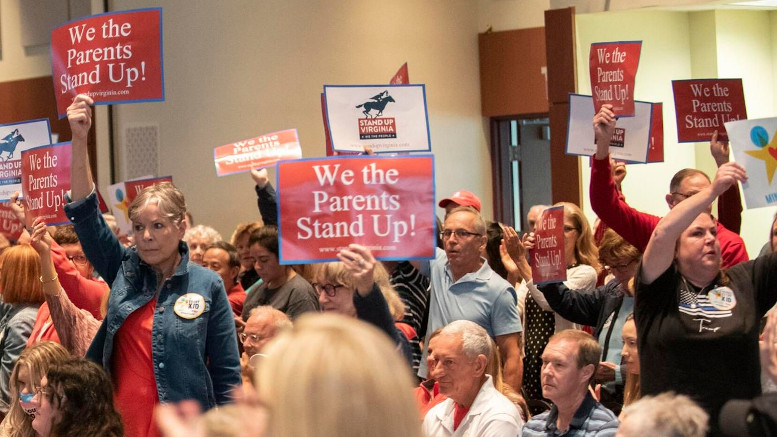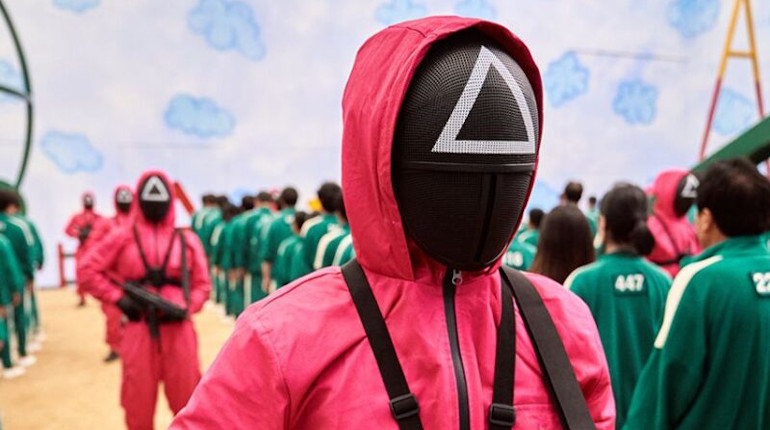Quinn Angelou-Lysaker is a member of Socialist Alternative in the US.
Debates have broken out in workplaces and school board meetings across the country as the Republican Party fights to ban Critical Race Theory (CRT) from the classroom. This debate is only one aspect of a culture war accelerated by the George Floyd rebellion in the summer of 2020. Though the tangible victories of the George Floyd rebellion were limited, masses of people did gain a sharper understanding of systemic racism. In the search for ideas, Critical Race Theory has proven to be an appealing framework for many. While CRT’s analysis of racism is superior on many points to liberal “colorblindness,” it still also avoids the sharpest points of debate within the anti-racist movement.
To further the struggle for Black lives, it will be necessary to defend workers, especially educators, from the anti-CRT legislation currently sweeping the U.S. That said, we will also need to reckon with the political limitations of CRT. It does not point the way toward the combative, multiracial working-class struggle that is needed to win major anti-racist demands like an end to racist police murders, gentrification, and systemic poverty.
The Right-Wing Uses CRT to Galvanize Their Base
Republican politicians have passed bills restricting the use of CRT in Idaho, Iowa, Oklahoma, Texas, North Carolina, and Tennessee, and they have proposed similar bills in over 10 additional states. The purpose of this campaign is two-fold: to undermine the gains from the Black Lives Matter movement and to rally the Republican party base as in the recent elections in Virginia and elsewhere.
Anti-CRT bills are a part of the right wing’s reaction to last summer’s rebellion. The Republican Party is working to put the movement back in its place. In addition to the anti-CRT bills, 81 anti-protest bills have been proposed in 34 states during the 2021 legislative session. Most recently, GOP legislators in Texas, Virginia, Missouri, Maine, and North Carolina have taken up campaigns to ban certain books that deal with race or LGBTQ issues from school libraries, including Toni Morrison’s Beloved. GOP politicians seek to restrict public discourse and organizing and ultimately deal the anti-racist movement a more decisive defeat.
This legislative campaign also serves to create a frenzy of paranoia among conservative parents – energy that gets funneled into votes and support for GOP politicians. Conservative think tanks and groups like the Proud Boys spread the idea that teachers are using CRT to indoctrinate students into a liberal or even socialist worldview and to shame white students. Of course, not all anti-racist curriculum is CRT, and this perspective exaggerates the extent to which CRT is really taught. In fact Randi Weingarten, the President of the American Federation of Teachers, asserts that CRT is not widely used in schools.
The right wing is deliberately and inaccurately using the term CRT as a catch-all for any discussion of racism that challenges their conservative ideology. The language of these bills is incredibly subjective and vague, beginning with Trump’s executive order which banned government agencies from using “divisive concepts” or “race and sex scapegoating” in their job trainings. Idaho’s legislation prohibits teachings that “exacerbate or inflame divisions on the basis of sex, race, ethnicity, etc.” The bills are designed to be weaponized against teachers who attempt an honest American history curriculum. Already, a high school teacher in Tennessee has been fired for including a spoken word poem entitled “White Privilege” in a lesson, and a principal in Texas was recently forced to resign for promoting “extreme views on race.”
The Anti-Racist Struggle in Education
A situation where teachers are “walking on eggshells” trying to discuss systemic racism in the classroom is unacceptable. Teacher unions and communities should rally for any teacher who is fired or suspended on the basis of these heinous bills. Still, there is a bigger question: what is an anti-racist education? The main goal should not be to get students to analyze their own privilege relative to other students but rather to understand the historical roots and consequences of racism and how they connect to the nature of capitalist society. A good anti-racist education teaches students of their capacity to effect change by emphasizing the role of movements in history, rather than just highlighting the accomplishments of a “few great men.” Teachers have an opportunity to not only teach about the problem but to foster a sense of political agency in their students so that they may be a part of the solution.
Moreover, curriculum is only one piece of the puzzle. Students of color face serious systemic disadvantages. American public schools are primarily funded through property taxes which advantages rich suburbs and disadvantages inner-city schools that heavily serve Black and immigrant students. It is time to stop the budget cuts to public schools and tax the rich to fully fund them instead. Ending high-stakes testing, merit pay and funding, privatization, and the trend toward charter schools would also go a long way toward creating an equitable education system for students of color.
Students, parents, and educators have fought corporate “education reform” for twenty years and won some important victories. But we must also be clear that education under capitalism will always be dictated by the need of the ruling class to transmit its ideology and train a new generation of workers. The pandemic has completely exposed education’s subservience to the needs of the market, as parents reluctantly returned their children to hastily reopened, unsafe schools this fall so that they could return to work. Capitalism places inherent limits on progressive educational reform. In a socialist society, public education would be run democratically by and for teachers and families.
The Origins of CRT
What is CRT exactly? It started to emerge in academia in the 1970s among sociology and legal studies scholars. Critical Race Theory grew out of Critical Legal Studies, which challenges the idea that laws are always objective or neutral. Scholar Kimberle Crenshaw organized the first formal CRT workshop in 1989. One of the strengths of CRT is that it is critical of liberal non-racism, or colorblindness. It calls for a proactive anti-racist struggle and stresses the need for a true transformation of society, not just incremental change. CRT correctly notes that equal rights alone will not eliminate racism and that policy can have racist implications without having explicitly racist language. Some CRT thinkers incorporate a materialist analysis of events, which is also positive. This means that in some cases, CRT attributes events not only to the will of individual politicians but also to the economy, the international balance of power, and other structural aspects of society.
That said, when it comes to the most troubling questions facing activists today, CRT gives at best a noncommittal shrug. For example – is racism maintained by the prejudice of individuals or by the structures of capitalism? And given that, should the movement aim to change hearts and minds primarily or to mobilize the whole working class and oppressed to win broad economic demands? CRT does not take a position. It attempts to represent a wide range of anti-racist ideas, but instead of unifying, it confuses. Through the lens of CRT, diversity and inclusion seminars have the same impact as direct action, strikes, and protest.
The ambiguity of CRT flows from its warped understanding of the relationship between racism and capitalism. Two CRT thinkers Richard Delgado and Jean Stefancic comment: “Because racism advances the interests of both white elites (materially) and working-class people (psychically), large segments of society have little incentive to eradicate it.” Here, the writers draw a false equivalency between benefitting materially and benefiting psychically. Is a white millionaire raking in profits from a private prison really the same as a conservative white bus driver who feels superior to his Black neighbors? Do those two people play an equal role in perpetuating systemic racism? Through the lens of CRT, sure they do.
CRT glosses over class differences. In doing so, it misrepresents the essential function of racism. The capitalist class consciously developed and maintained racist ideology as a tool to prevent workers from uniting against them. While racism has had mass support in big sections of the white population in the past and to a lesser degree today, the key factor at every stage of the development of systemic racism has been the ruling class. Even today, when much of corporate America has gone all in for “woke capitalism,” the underlying goal is to stress how little people have in common and thereby maintain division. And we shouldn’t for a moment think they won’t revert to promoting racial division outright if they see their interests threatened by a united workers movement.
Delgado and Stefancic’s perspective also dismisses the history of multiracial working class solidarity. If the white working class truly has no vested interest in eradicating racism, then it can only join the movement from a place of either pity or moral outrage. Even a cursory look at the historical record refutes that perspective. There have been points when white workers have fought fiercely for the Black freedom cause on the basis of class solidarity – from the white textile worker women who fought tirelessly for abolition of slavery, to the left-led CIO unions which took on racism in the 30s and 40s, to the BLM protesters in rural areas last summer. CRT calls for mass social struggle, but its perspectives on bringing the entire working class into the movement are pessimistic, demobilizing, and ahistorical.
It is also important to consider that the Black freedom movement was hugely demoralized around the time that CRT came to be. The assassination of the radical Black freedom leaders like Malcolm X, Dr. Martin Luther King Jr., and Fred Hampton, as well as the beginnings of the vicious War on Drugs and the neoliberal cuts to Black communities’ already meager resources crushed the revolutionary spirit of the 1960s. The capitalist establishment also promoted the growth of a small Black middle class in the 1970s, giving the illusion of progress. Confusion and division overtook the movement. Many understandably frustrated Black academics drew an incorrect conclusion from the defeats of the 1960s and 1970s – that direct confrontation with the capitalist class is a failed strategy which should be abandoned. Thus, CRT does not offer a fighting program and remains ambiguous on the question of tactics and on the role of the working class. This seriously limits its usefulness to those interested in systemic change.
Fighting Back
The ACLU and the NAACP have launched lawsuits to try to undo the CRT bans. Biden overturned Trump’s executive order on his first day in office. While of course first amendment free speech rights should be defended, overturning these bills one by one will not address the issues underlying the attacks on CRT. Namely, these attacks are a manifestation of the radicalization of the right wing, evident in the January 6 coup attempt on the Capitol, the anti-trans “Bathroom Bills,” and the slashing of reproductive rights. The right wing has learned the lessons of the Trump era, and these bold campaigns have been key to mobilizing their hardcore base.
As months of the Biden administration go by without meaningful progress on issues like Medicare for All, climate change, and labor rights, and as inflation and the pandemic continue unabated, the Republican Party grows in appeal. The Democratic Party’s failure to materially improve the lives of working people leaves an opening for the GOP to advance. In order to cut across the momentum of the right, the left must offer a genuine alternative. A new mass party that rejects corporate cash and fights unequivocally for the working class could win over layers of society that may otherwise be pulled towards the right.
The CRT debate shows that although folks may not be engaged in mass mobilizations at the moment, the thousands of people who took to the streets last summer are still searching for ways to continue the struggle against racism. CRT as a theory lacks the political clarity needed to take the movement forward. It is time for a socialist approach.
Fred Hampton of the Black Panther Party said it best: “We’re going to fight racism not with racism, but we’re going to fight with solidarity. We say we’re not going to fight capitalism with black capitalism, but we’re going to fight it with socialism.” Racism is a tool to super-exploit certain sections of the working class and to prevent workers from uniting with one another against the bosses. The fight to eradicate racism must begin with an organized, protracted movement of strikes, walkouts, and direct action with the working class on the front lines. Sections of society are already showing the way, like the majority Black Amazon warehouse workers who led a historic union drive in Alabama last year and the bus drivers of Minneapolis who refused to transport the BLM protestors who were arrested. Policy change is critical, but capitalism will always require divisive ideologies like racism. To have lasting solidarity, equality, and peace, we need a socialist transformation of society.




